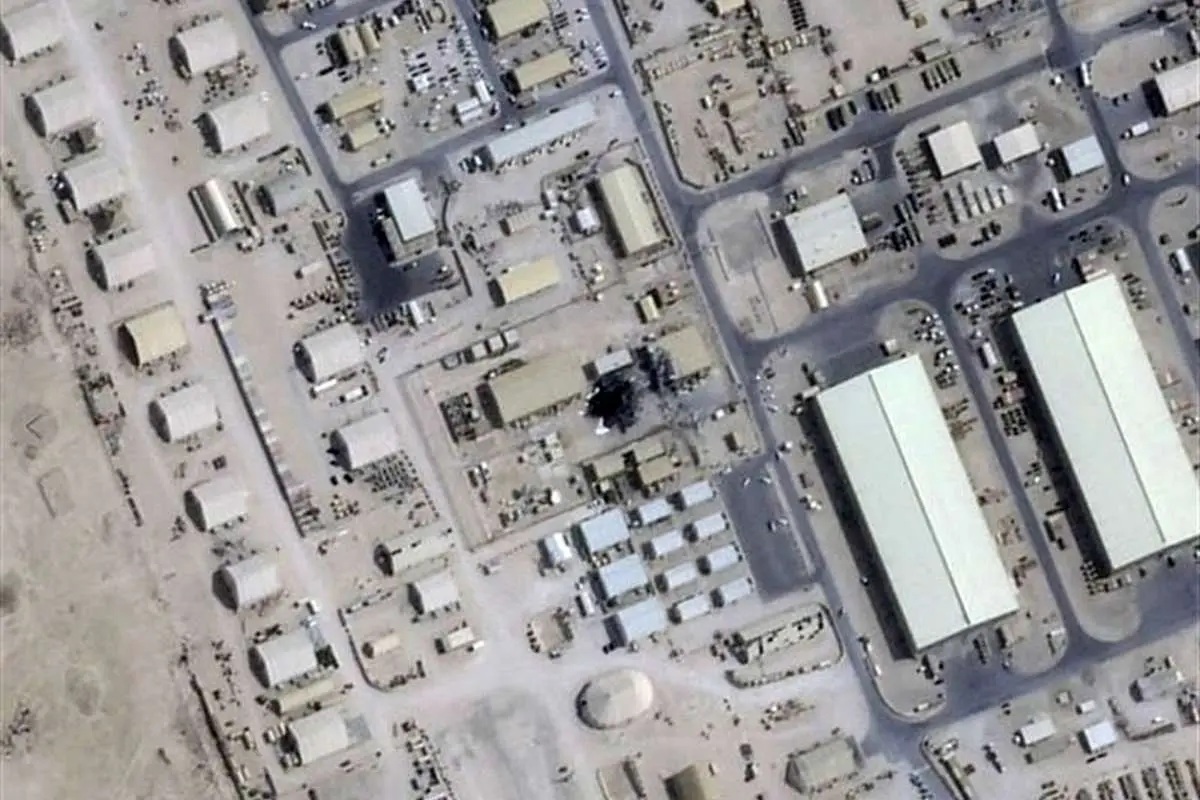How Was the Geodesic Dome of the Al-Udeid Base Destroyed?
TEHRAN (Defapress) - The criminal and all-out invasion of the Zionist regime against Islamic Iran was met with crushing responses from the armed forces, ultimately forcing the enemy, after failing to achieve its objectives in a 12-day war and suffering heavy losses and casualties, to request a ceasefire. The widespread destruction in the south, center, and north of the occupied territories further confirms the significant damages inflicted upon the criminal and aggressive Zionist regime.

As the occupied territories came under fire from Iran's missiles and the situation of the Zionist regime deteriorated, the United States also entered direct combat with Iran to support its puppet. In the early hours of June 25, Iran’s nuclear facilities were targeted by American fighter jets and missiles. However, in response, the Islamic Republic of Iran carried out the Annunciation of Victory Operation, launching a powerful attack using a combination of hypersonic missiles to strike the American Al-Udeid Air Base, the central hub of CENTCOM (the U.S. Central Command for the West Asia and North Africa region), in Qatar.
Donald Trump, in various interviews, attempted to downplay this attack, claiming that Iran had not targeted all U.S. bases and had only fired a few missiles at Al-Udeid, which he said had no significant impact for Iran. This claim is utterly false and a pure lie. If, as the U.S. president claimed, the attack was insignificant, then why did the U.S. and Trump himself indirectly request a ceasefire from Iran? Iran’s missile strike on Al-Udeid not only inflicted heavy losses on the U.S. regional command headquarters but also demonstrated that America was concerned about the escalation of Iranian attacks and the potential closure of the Strait of Hormuz.
Another notable point following Iran’s missile attack, supported by satellite images released by foreign media, was the destruction of the U.S. military’s geodesic communication dome at Al-Udeid Air Base in Qatar. This geodesic dome housed advanced radar systems capable of tracking ballistic missiles. The destruction of this communication system, which caused $15 million in damages to the U.S., could severely disadvantage America in any future conflict.
The Supreme Commander of the Armed Forces also commented on Iran’s heavy blow to the largest U.S. base in the region, stating: "Al-Udeid was an extremely sensitive U.S. center in the region, and once media censorship is lifted, it will become clear just how devastating Iran’s strike was. Of course, an even greater blow can be dealt to America and others."
Since the foundation of Iran’s offensive power lies in its ballistic missile capabilities, several European countries, as well as the U.S., would play a role in tracking Iran’s ballistic missiles. The most critical role of U.S. Central Command in missile tracking relied on this $15 million system, which, according to available evidence, was completely destroyed by Iran’s precise strike.
The destruction of this geodesic dome will help Iran achieve the following objectives with greater accuracy using hypersonic ballistic missiles and even conventional missiles:
Primary targets include deep within the occupied territories, which, if the war escalates, could shift the battlefield equation in Iran’s favor. For example, the Haifa Bazan refinery, currently undergoing initial repairs, could be one such target. If it was previously hit with minimal missiles, in a future war, it could be struck with a significant number of missiles, inflicting massive economic damage and severe financial consequences on the Zionist regime.
Secondary targets include locations in the Persian Gulf and the Indian Ocean within range of Iran’s ballistic missiles. Strategic bases such as the Sheikh Isa Air Base and the U.S. Fifth Fleet headquarters in Bahrain are among these. Additionally, giant American warships and aircraft carriers, hundreds of meters long, could easily be targeted in a swift attack, especially without the Al-Udeid geodesic system’s tracking capability. For instance, if a missile were launched from the Semnan desert toward the Indian Ocean’s entrance, CENTCOM’s primary radar line, currently stationed at Al-Udeid in Qatar, would be unable to detect it, leading to certain losses for the U.S. military.
In summary, the destruction of the geodesic dome at Al-Udeid Air Base in Qatar ensures that if the U.S. and the Zionist regime provoke another war, Iran will have greater operational freedom to wield its offensive power against the Western-Arab-Hebrew front.
